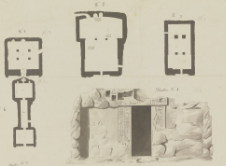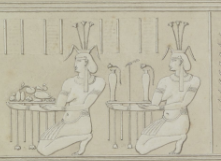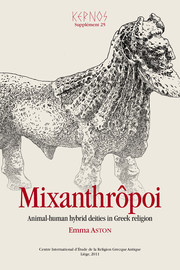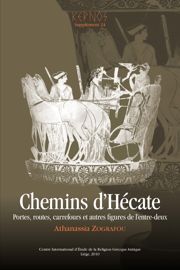ISAW Papers is an open-content scholarly journal that publishes article-length works on any topic within the scope of ISAW's scholarly research. All works are distributed under a Creative Commons-Attribution license and will be archived in the NYU Faculty Digital Archive (FDA). ISAW is collaborating with the NYU Library's Digital Library Technology Services team to deliver innovative digital versions through a richly-linked online reader in harmony with another joint initiative, the AncientWorldDigitalLibrary (AWDL), which aims to accelerate and enhance access to the emerging global library of digital publications on the ancient world.
Articles in ISAW Papers are either anonymously reviewed by expert readers or are submitted by individual faculty members. The review process for each document is clearly indicated.
As part of ISAW's digital publication initiative, the editorial workflow of ISAW Papers will come to rely on authoring tools that enable lower-cost creation of high-quality digital resources.
Most Recent Article
Dorian Greenbaum and Alexander Jones. (2017). P.Berl. 9825: An elaborate horoscope for 319 CE and its significance for Greek astronomical and astrological practice. ISAW Papers, 12. <http://dlib.nyu.edu/awdl/isaw/isaw-papers/12/>. Abstract: The discovery of this elaborate horoscope in the Berlin papyrus collection is a milestone in the history of ancient horoscopes. The papyrus takes its place among very few such detailed horoscopes well preserved from antiquity. This paper discusses both the astronomical and astrological details of P.Berl. 9825, enumerating its contents and situating it within the broader historical and cultural context of astrological material from western antiquity. The first section outlines the physical details of the papyrus, its paleography, and the layout of the material among the different sections of the papyrus. It consists of seventeen columns spread among four framed sections. The beginning of the papyrus is lost, but enough remains to allow reconstruction of the date and time of the horoscope, in addition to the positions of the missing luminaries and planet (Saturn). A transcription and translation with apparatus and textual notes follow. A commentary in three parts follows the first section. Part 1 contains restorations, confirmations and corrections. This includes both a tabular summary of the data given in the horoscope, and a diagrammatic representation of the data. Part 2 consists of an astronomical commentary, comparing the astronomical data in the papyrus with Ptolemy’s Almagest and modern theory, to demonstrate that the horoscope was constructed using tables distinct from Ptolemy's, though of comparable quality. The commentary also includes analysis of solar and lunar data, planetary latitudes, and fixed stars “co-rising” with the longitudes of the relevant heavenly body. Part 3 is an astrological commentary. Comparisons with other elaborate horoscopes are made, in addition to analysis of the astrological techniques based on the data provided. Because this is the only extant example of a documentary horoscope containing all seven of the “planetary” lots of Paulus Alexandrinus, there is a more extensive discussion of the lots used here within their historical and cultural context.
All Articles
Abstract:Two cuneiform astrological tablets in the British Museum provide the first evidence for Babylonian knowledge of the so-called "doctrine of the Terms" of Greco-Roman astrology (BM 36326 and BM 36628+36817+37197). Greek, Latin, and Egyptian astrological sources for the various systems of Terms and their origin are reviewed, followed by preliminary editions and translations of the relevant sections of the tablets. The system of Terms is shown to be so far the most technically complex component of Greek astrology to originate in Babylonia. Over the course of the Hellenistic period an Egyptian origin was ascribed to the systems of Terms as it was combined with components of Greek horoscopic astrology. By Ptolemy's day, this spurious history had largely displaced the true.
Abstract: The authors review scholarship on Ptolemaic numismatics published between 1996 and 2007. They present the major conclusions of articles discussing the distribution, role in the economy, iconography, weights standards and other aspects of this important Hellenistic coinage.
Abstract: The modern economist Peter Temin has recently used econometrics to argue that the Roman grain market was an integrated and efficient market. This paper gathers additional data and applies further methods of modern economic analysis to reach a different conclusion. It shows that the overall Roman economy was not fully integrated, although the Mediterranean Sea did create some meaningful integration along a few privileged trade routes. Still, it is not possible to identify pure market forces that existed in isolation, since the political structures that maintained the Empire strongly influenced the movement of money and trade goods.
Abstract:The Antikythera Mechanism is a fragmentarily preserved Hellenistic astronomical machine with bronze gearwheels, made about the second century B.C. In 2005, new data were gathered leading to considerably enhanced knowledge of its functions and the inscriptions on its exterior. However, much of the front of the instrument has remained uncertain due to loss of evidence. We report progress in reading a passage of one inscription that appears to describe the front of the Mechanism as a representation of a Greek geocentric cosmology, portraying the stars, Sun, Moon, and all five planets known in antiquity. Complementing this, we propose a new mechanical reconstruction of planetary gearwork in the Mechanism, incorporating an economical design closely analogous to the previously identified lunar anomaly mechanism, and accounting for much unresolved physical evidence.
Abstract: This brief note draws attention to a passage from the Syriac Cause of All Causes that describes the Pillars of Hercules, but as being three in number rather than two. The Syriac text in question has been well-known since it was published in 1889. This particular passage is studied and commented on here especially as it appears in a recently cataloged manuscript from Dayr Al-Za‘farān, in which the passage is completely divorced from its context in the Cause of All Causes.
Abstract: This study examines recent archaeological evidence for the Quartier du Stade on Delos, which was newly formed after 167 CE. Analysis of the changes in the houses and the overall urban development of this neighborhood contribute to revealing the forces that shaped the city of Delos in this period, such as economy, politics, and ideology.
Abstract: Reports on current work relevant to the role of Linked Open Data (LOD) in the study of the ancient world. As a term, LOD encompasses approaches to the publication of digital resources that emphasize stability, relatively fine-grained access to intellectual content via public URIs, and re-usability as defined both by publication of machine reabable data and by publication under licenses that permit further copying of available materials. This article presents a series of reports from participants in 2012 and 2013 sessions of the NEH-funded Linked Ancient World Data Institute. The contributors come from a wide range of academic disciplines and professional backgrounds. The projects they represent reflect this range and also illustrate many stages of the process of moving from concept to implementation.
Abstract: The extant portion of the verso side of the “Muziris papyrus” (PVindob G 40822 v = SB XVIII 13617 v) contains the monetary evaluation of three-quarters of an Indian cargo loaded on the ship Hermapollon. Among the commodities are 167 elephant tusks weighing 3,228.5 kgs and schidai weighing 538.5 kgs. It is argued that schidai are fragments of tusks trimmed away from captive elephants. A comparison with commercial ivory lots of the early sixteenth century shows the selected quality of the tusks loaded on the Hermapollon.
Abstract: A long and well preserved sword was brought to light in 2006 during the archaeological excavations carried out by the Soknopaiou Nesos Project (University of Salento, Lecce) in the temenos of the main temple in Soknopaiou Nesos, modern Dime. The current state of research would suggest a classification as a Roman, or at least Roman influenced, weapon of the late Republican period. However, some peculiar elements of this sword seem to point to an oriental or Egyptian final assemblage. It thus may give a new impulse to the still open discussion about the appearance of Hellenistic swords starting from the period of Alexander's Successors. The weapon can have been used by soldiers of the late Ptolemaic period as well as by members of the Roman army. The question whether the sword ended up in the temenos as part of local defensive arms or as a votive object will largely remain speculative, as its find context is not stratigraphically reliable.
Sebastian Heath, J.L. Rife, Jorge J. Bravo III, and Gavin Blasdel. (2015). Preliminary Report on Early Byzantine Pottery from a Building Complex at Kenchreai (Greece). ISAW Papers, 10. <http://dlib.nyu.edu/awdl/isaw/isaw-papers/10/>. Abstract: This paper presents the results of preliminary study of Early Byzantine pottery from a large building near the waterfront at Kenchreai in southern Greece. Kenchreai served as the eastern port of Corinth throughout antiquity. The building was first excavated in 1976 by the Greek Archaeological Service, and it has been investigated since 2014 by the American Excavations at Kenchreai with permission from the Ministry of Culture under the auspices of the American School of Classical Studies at Athens. The pottery is characterized by the presence of many Late Roman Amphora 2 rims as well as stoppers and funnels. This indicates that the building had a role in the distribution of regional agricultural products during its final phase, which is dated to the very late sixth or early seventh centures A.D. by African Red-Slip and Phocaean Red-Slip tablewares. A wide range of lamps, glass vessels, and other small finds has also been recorded. Results to date are preliminary but ongoing work may allow further precision as to the chronology and use of this building.
Abstract: The Antikythera Mechanism is a mechanical astronomical instrument that was discovered in an ancient shipwreck at the beginning of the twentieth century, made about the second century B.C. It had several pointers showing the positions of the moon and sun in the zodiac, the approximate date according to a lunisolar calendar, several subsidiary dials showing calendrical phenomena, and also predictions of eclipses. The mechanism also had a display of the Moon’s phases: a small ball, half pale and half dark, rotating with the lunar synodic period and so showing the phases of the moon. The remains of the moon phase display include a fragmentary contrate gear. According to the reconstruction offered by Michael Wright, this gear is now pointing unintentionally in the wrong direction. In this paper we offer for the first time a detailed description of the remains of the moon phase mechanism. Based on this evidence, we argue that the extant contrate gear direction is the originally intended one, and we offer a conjectural explanation for its direction as an essential part of a representation of Aristarchus’s hypothesis that half moon phase is observably displaced from exact quadrature.
Dorian Greenbaum and Alexander Jones. (2017). P.Berl. 9825: An elaborate horoscope for 319 CE and its significance for Greek astronomical and astrological practice. ISAW Papers, 12. <http://dlib.nyu.edu/awdl/isaw/isaw-papers/12/>. Abstract: The discovery of this elaborate horoscope in the Berlin papyrus collection is a milestone in the history of ancient horoscopes. The papyrus takes its place among very few such detailed horoscopes well preserved from antiquity. This paper discusses both the astronomical and astrological details of P.Berl. 9825, enumerating its contents and situating it within the broader historical and cultural context of astrological material from western antiquity. The first section outlines the physical details of the papyrus, its paleography, and the layout of the material among the different sections of the papyrus. It consists of seventeen columns spread among four framed sections. The beginning of the papyrus is lost, but enough remains to allow reconstruction of the date and time of the horoscope, in addition to the positions of the missing luminaries and planet (Saturn). A transcription and translation with apparatus and textual notes follow. A commentary in three parts follows the first section. Part 1 contains restorations, confirmations and corrections. This includes both a tabular summary of the data given in the horoscope, and a diagrammatic representation of the data. Part 2 consists of an astronomical commentary, comparing the astronomical data in the papyrus with Ptolemy’s Almagest and modern theory, to demonstrate that the horoscope was constructed using tables distinct from Ptolemy's, though of comparable quality. The commentary also includes analysis of solar and lunar data, planetary latitudes, and fixed stars “co-rising” with the longitudes of the relevant heavenly body. Part 3 is an astrological commentary. Comparisons with other elaborate horoscopes are made, in addition to analysis of the astrological techniques based on the data provided. Because this is the only extant example of a documentary horoscope containing all seven of the “planetary” lots of Paulus Alexandrinus, there is a more extensive discussion of the lots used here within their historical and cultural context.
Links: zotero

















